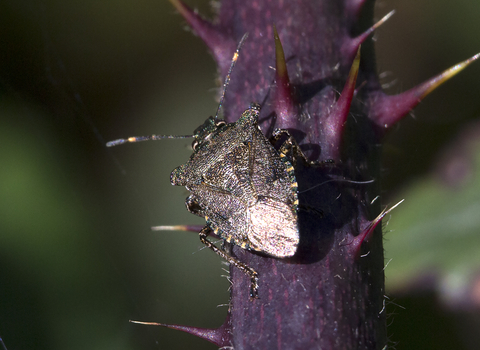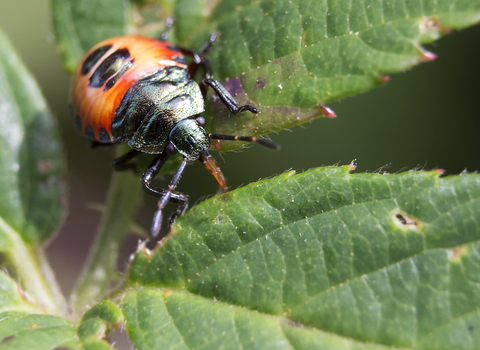
Bronze shieldbug ©Chris Lawrence

Bronze shieldbug nymph ©Chris Lawrence
Bronze shieldbug
Unlike many of its relatives, this shimmering shieldbug is a predator, feasting on caterpillars and a variety of other insects.
Scientific name
Troilus luridusWhen to see
All yearTop facts
Category
Stats
Grows up to 10-12mm in lengthAbout
Perhaps one of the more difficult species to spot, the bronze shieldbug lives amongst both broadleaf and coniferous trees and is most likely to be found in woodland habitats. Although it feeds on tree sap during its early stages of life, the bronze shieldbug is normally predatory and uses its long proboscis (straw like mouth parts) to feed on a variety of other insects such as caterpillars.Shieldbugs go through several stages of growth, with the younger stages known as nymphs. Bronze shieldbugs normally reach their adult stage during July, overwinter as adults, then mate the following spring. There is only one generation a year.
What to look for
Growing to sizes of 10-12mm in length, this large shieldbug is mostly brown/bronze with orange stripes around the edges of the abdomen. It can be separated from other species by the plain brown scutellum (the triangular section on its back) and the orange band around the top of the second to last segment of the antennae.The final nymph stage can have either cream or red markings.
